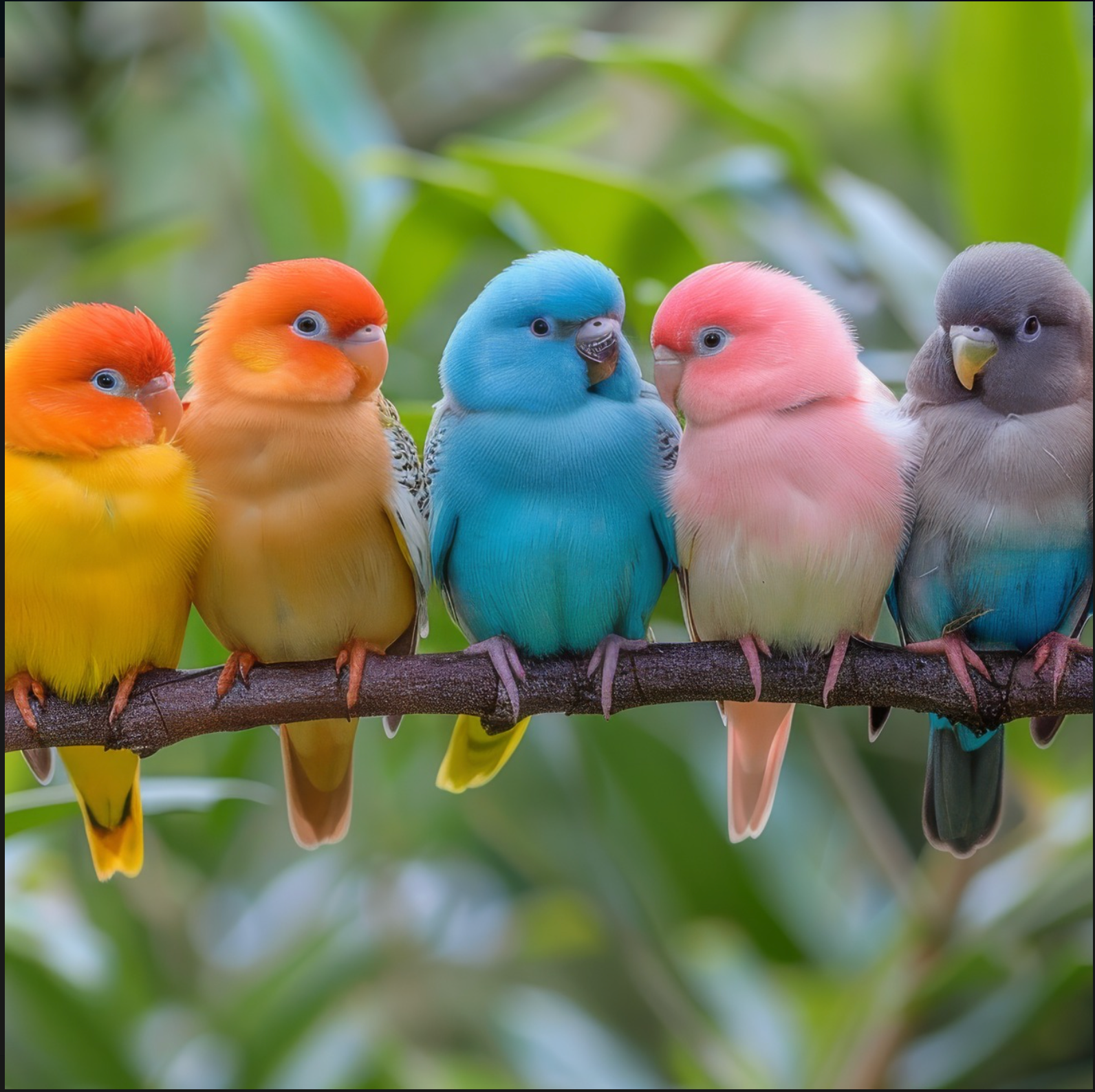MANAGING MULTIPLE BIRDS IN ONE HOME

MANAGING MULTIPLE BIRDS IN ONE HOME
SUMMARY
Successfully care for multiple pet birds by creating a harmonious and enriching environment. This guide covers essential tips for introducing new birds, maintaining social balance, preventing aggression, and ensuring all birds receive proper care and attention.
FEATURES
- Introducing New Birds: Step-by-step process for a smooth and stress-free introduction.
- Cage Arrangements: Set up cages and perches to promote harmony among birds.
- Social Dynamics and Bonding: Understand bird relationships and how to foster positive interactions.
- Preventing Aggression: Learn how to recognize and manage conflicts between birds.
- Feeding Strategies: Ensure all birds receive adequate nutrition without competition.
- Multi-Bird Enrichment: Provide engaging toys and activities for different species.
- Health Monitoring: Keep track of individual bird health in a multi-bird household.
- Training and Socialization: Encourage positive behaviors through group and individual training.
DESCRIPTION
Managing multiple birds in one home requires careful planning to ensure a peaceful and well-balanced environment. Birds are social creatures, but each species and individual has unique social needs, territorial behaviors, and interaction preferences. With the right approach, you can create a thriving multi-bird household.
Introducing new birds properly is key to avoiding conflicts. Never place a new bird directly into an existing bird’s cage, as this can lead to territorial aggression. Instead, start by housing the new bird in a separate cage within sight of the other birds. Gradually allow supervised interactions in neutral territory before considering cohabitation. Some birds will bond quickly, while others may need more time to adjust.
Cage arrangements play a significant role in maintaining harmony. If housing multiple birds in one cage, ensure it is spacious enough for each bird to have its own perch and personal space. Overcrowding can lead to stress and fighting. Separate cages may be necessary for birds with different temperaments or species that do not coexist well.
Understanding social dynamics is essential for managing multiple birds. Some birds enjoy companionship, while others are more independent. Parrots like budgies, cockatiels, and conures often thrive in pairs or groups, while certain territorial birds, such as lovebirds, may become aggressive toward cage mates. Observing interactions and providing space for individual birds to retreat when needed helps prevent tension.
Preventing aggression is crucial in a multi-bird household. Signs of hostility, such as lunging, chasing, or feather pulling, should be addressed immediately. Offering separate feeding stations, multiple perches, and plenty of out-of-cage play areas can reduce competition and territorial disputes. If aggression persists, keeping birds in separate cages while allowing supervised socialization time may be the best option.
Feeding multiple birds requires planning to ensure each bird gets adequate nutrition. Some birds may guard food bowls or push others away. Providing multiple feeding stations and offering food at the same time in different areas prevents resource guarding and ensures all birds eat comfortably. Adjust diets based on species-specific nutritional needs.
Multi-bird enrichment is essential to keep all birds mentally and physically stimulated. Offering a variety of toys, such as shredding materials, foraging puzzles, and climbing structures, ensures that each bird stays engaged. Rotating toys frequently and allowing birds to interact in supervised group play settings can encourage bonding and prevent boredom.
Monitoring the health of multiple birds requires close attention. Birds often hide signs of illness, so observing changes in eating habits, energy levels, or feather condition is important. Regular veterinary checkups and keeping a log of each bird’s health can help detect issues early. Quarantining new birds before introducing them to the flock helps prevent the spread of disease.
Training and socialization in a multi-bird home require a balance of group and individual attention. Some birds may learn from each other, while others may need one-on-one training sessions to reinforce behaviors. Encouraging cooperative behaviors, such as sharing space and taking turns with toys, helps create a positive and well-adjusted flock.
By following these strategies—proper introductions, social balance, enrichment, and conflict prevention—you can successfully manage multiple birds in one home. With patience and structured care, your birds can coexist happily and form lasting bonds with both their human caregivers and their feathered companions.
- sri palani

Comments 0